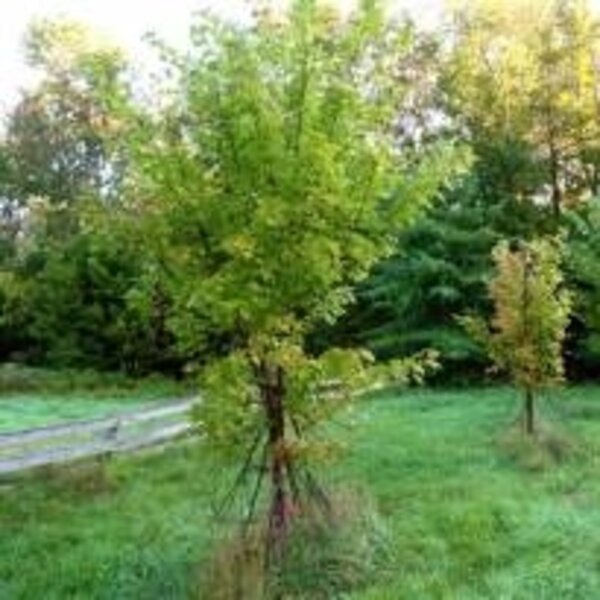Tree logic turns trees upside down
Loading...
Six sugar maples grow in containers outside Storey Publishing’s office in the courtyard of Mass MoCA (Massachusetts Museum of Contemporary Art) in North Adams, Mass. No big deal, you say?
Well, these trees are different. They hang upside down from trusses. They’re art.
The artist behind the installation, "Tree Logic" (1999), is Dr. Natalie Jeremijenko, a design engineer in New York University’s art department and director of the xdesign (experimental design) Environmental Health Clinic.
"Tree Logic" makes me see trees in new ways. Their orderly spacing makes them resemble a cozy tree-lined street turned on its head. Upon closer inspection, you see how the tree branches twist and sprout to accommodate their inevitable growth toward the sun (phototropism) and away from the earth (gravitropism).
The xdesign clinic website describes the mental process of appreciating this artwork:
The slow gymnastics of these trees invites interpretation and speculation on what they will do, could do, how much they have grown or changed, and what birds think of them. Trees are icons of the natural, however, uprooted, they display a logic that redefines our own.
Is it mean to mess with trees? Nah. More than a year ago, the first generation of upside-down maples retired to a high field behind the Clark Art Institute in nearby Williamstown, Mass. They grow like most other trees, roots spreading in the earth, young branches reaching for the sun.
Storey is my publisher, and when my editor suggested a trek to find the older maples, I cheered my good fortune. Up we climbed, past remnants of a bonfire and some grazing horses, through muck and mud, until we reached a small clearing bordered by trees.
The maples were in the middle, settling and adjusting to their new locale and conventional orientation.
So what happens to a right-side-up tree grown upside down and then, after a few years, set right side up again? The dynamic laws of plant growth continue to drive the tree’s existence. According to the Mass MoCA website, “Our perceptions of trees change when we view them as a collection of growth responses rather than as immutable symbols of the natural world.”
If growing plants upside down appeals to you, check out this website, where you can test the concept of upside down growth on a small scale.
For those of you with tree and shrub questions, leave a comment below and I’ll do my best to answer them.
Penelope O’Sullivan, who writes about trees and shrubs at Diggin’ It, is the author of “The Homeowner’s Complete Tree & Shrub Handbook: The Essential Guide to Choosing, Planting, and Maintaining Perfect Landscape Plants.” She has a landscape design business on the New Hampshire seacoast.
Editor’s note: To read more posts by Penelope, see our blog archive. The Monitor’s main gardening page offers articles on many gardening topics. See also our RSS feed. You may want to visit Gardening With the Monitor on Flickr. Take part in the discussions and get answers to your gardening questions. If you join the group (it’s free), you can upload your garden photos and enter our next contest.






